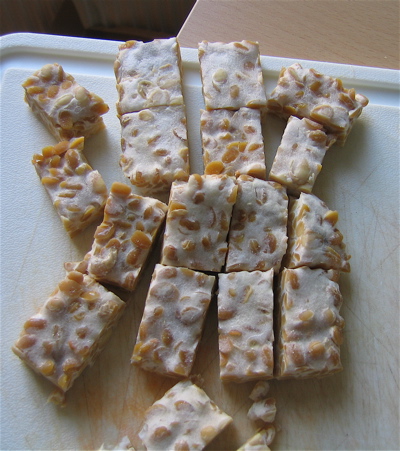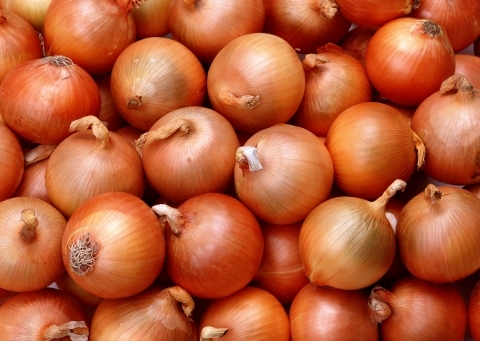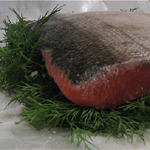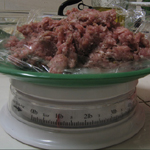Braised Caramelized Fennel
1 large fennel bulb (or 2 small)
2-3 T olive oil
1 c. dry white wine, or a mixture of wine and waterOptional garnishes: butter, freshly grated parmesan cheese
Cut the stems and fronds from the fennel and discard. Core the fennel by cutting a pyramid shaped wedge around the core on the bottom of the bulb. Discard the core. Slice fennel into six wedges.
Heat olive oil in a heavy skillet over medium-high heat until hot but not smoking. Add fennel wedges and saute about 4-5 minutes per side, until the sides are a nice golden brown color. Add the wine and reduce heat to low. Cover and simmer until nearly all of the wine has evaporated or has been absorbed, about 45 minutes.
If desired, dot each wedge butter or sprinkle with freshly grated parmesan.
* * * * * * * * * * * * * * * * * * * *
When I used to live in downtown San Francisco, I would take the commuter train each morning from the 22nd Street station, an oddly quiet, dilapidated and desolate platform situated under the raised highway. The station was usually deserted except for the five minute period before a train’s arrival. Most mornings the station’s aroma was a melange of diesel smoke from the trains, car exhaust from the road overhead, and unknown chemical scents from the unidentifiable businesses with corrugated tin walls on Pennsylvania Avenue. For a few weeks during the spring and fall though, the air was decidedly sweeter–my olfactory organ were delighted by the scent of thriving wild fennel.
When one imagines an ideal environment for a plant to thrive, it’s rarely the train station under the freeway or the abandoned gravel lot in the middle of downtown; but for wild fennel, these places are home sweet home, especially in the Bay Area’s mediterranean climate.
On especially long or tiring days, I would imagine that the fennel was standing at the edge of the concrete sidewalk, seeing me off as I left and greeting me when I returned. The six foot tall celery-like stalks would wave their feathery leaves and flowery yellow embels in my direction, filling the air with a spicy, licorice-like scent.
Fennel comes in two main varieties: wild and cultivated. Wild fennel, as described above, is often found growing in the most un-hospitable of places–abandoned lots, roadsides, train stations, etc. Despite its sometimes sketchy origins, the leaves and flowers of wild fennel make an excellent addition to soups, salads, sauces, and marinades, and also make a beautiful garnish. Cultivated fennel, also known as Florentine fennel, is what you find in the grocery store or at the farmer’s market. It has a compact, white, layered, bulbous base and looks a little like an onion but…… but is completely and totally unlike an onion in every other sense. Fennel is one of the most unique vegetables in my eyes, and also one of the most versatile. For ages the Italians have been slicing it paper thin (raw) and serving it with oranges; it’s also commonly found sliced into rings and caramelized (I swear, at least taste-wise it’s really nothing like an onion). It can be eaten raw, grilled, roasted, gratin-ed, stewed, and so much more. My favorite way of preparing fennel, especially on a cold winter evening, is a combination caramelize-braise, as described in the recipe above. The edges turn a beautiful deep golden brown, and the rest of the bulb becomes melt-in-your-mouth tender… delicious!
Besides simply enjoying it on its own, braised caramelized fennel is great with an herb-y pork tenderloin or a crispy roasted chicken. It’s also delicious sliced onto a white pizza with a generous handful or two of grated parmesan and a sprinkling of fresh herbs (tarragon is especially good here) and a dash of balsamic vinegar (after the pizza is cooked). If you’ve never cooked fennel, I encourage you to give this delicious and unique vegetable a try.
« Simple Basil Buttermilk Salad Dressing | Home | Georgia Boiled Peanuts »











